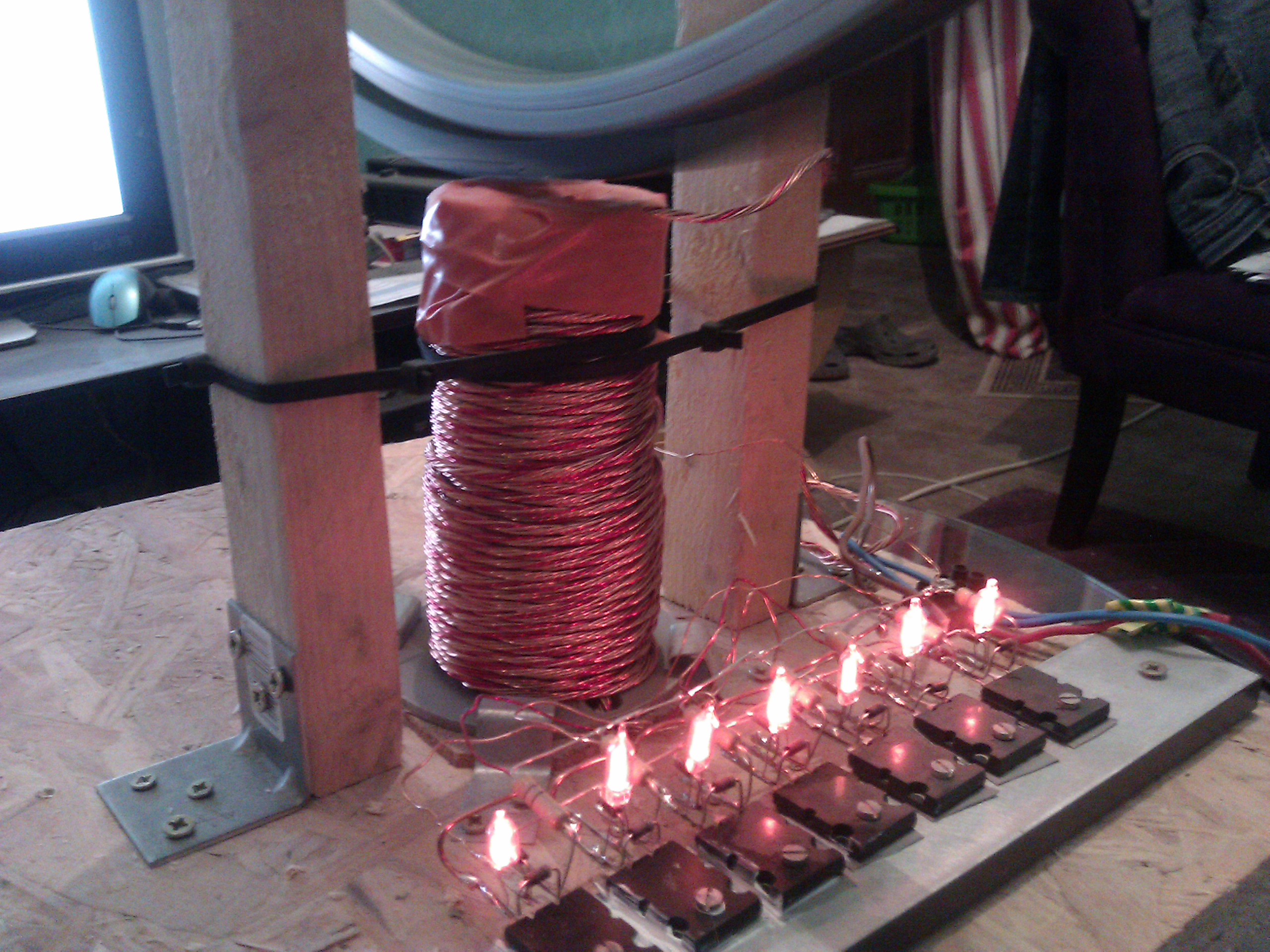Hi,
I'm new here and I came because after replicating the SG Motor, I can't get the wheel to keep running, everything else seems to work well. It's just the weel that doesn't keep running.
Some description of what I built :
- 24 magnets (ceramic, 40x20x10mm, Y35, 2.5kg pull) on a bicycle wheel
- A coil as instructed, with 8x40 meters long wire (1x0.5mm and 7x0.8mm diameter) wound as instructed
- the circuit with 7 MJL21194-G transistors, and the other parts as instructed
I checked that the neon lamps were working as expected, and when I plug in the run battery, the neon lamps lit up for an instant. If I start turning the wheel, when a magnet passes in front of the coil, all the neon lamps lit up. If I hook the charge battery, the neon lamps don't lit up any more.
Do you have an idea of what could go wrong? All the 7 wires in the coil are being triggered because the neon lamps lit up. How come the magnets are not attracted by that?
Thank you,
Mildred
I'm new here and I came because after replicating the SG Motor, I can't get the wheel to keep running, everything else seems to work well. It's just the weel that doesn't keep running.
Some description of what I built :
- 24 magnets (ceramic, 40x20x10mm, Y35, 2.5kg pull) on a bicycle wheel
- A coil as instructed, with 8x40 meters long wire (1x0.5mm and 7x0.8mm diameter) wound as instructed
- the circuit with 7 MJL21194-G transistors, and the other parts as instructed
I checked that the neon lamps were working as expected, and when I plug in the run battery, the neon lamps lit up for an instant. If I start turning the wheel, when a magnet passes in front of the coil, all the neon lamps lit up. If I hook the charge battery, the neon lamps don't lit up any more.
Do you have an idea of what could go wrong? All the 7 wires in the coil are being triggered because the neon lamps lit up. How come the magnets are not attracted by that?
Thank you,
Mildred

 ). The neons are only there to limit the damage to the transistors if you accidentally disconnect the charge battery or your charge battery is very sulfated. They should never be used to test if the SG is working or not.
). The neons are only there to limit the damage to the transistors if you accidentally disconnect the charge battery or your charge battery is very sulfated. They should never be used to test if the SG is working or not.
Comment